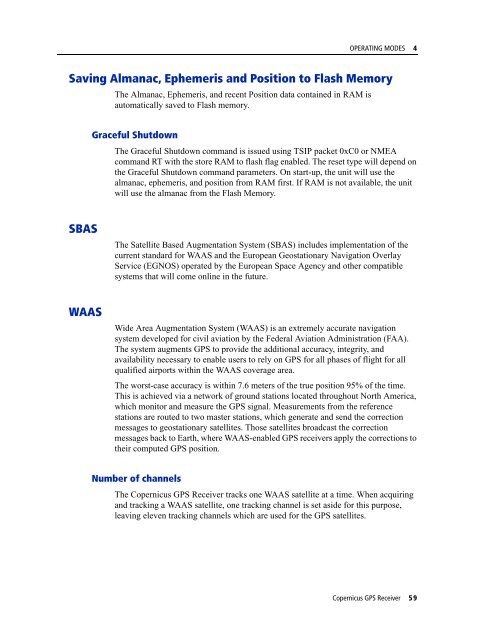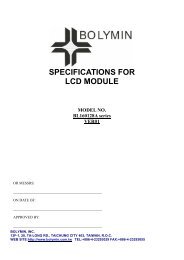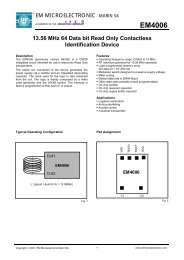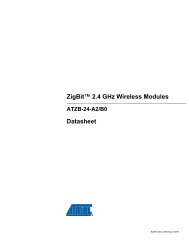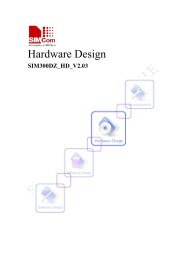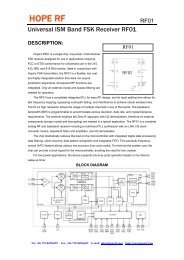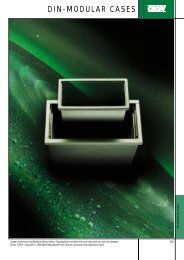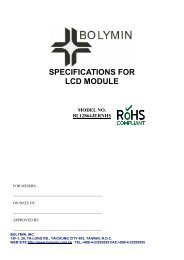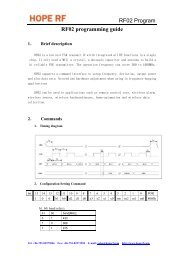REFERENCE MANUAL - FTP Directory Listing - Trimble
REFERENCE MANUAL - FTP Directory Listing - Trimble
REFERENCE MANUAL - FTP Directory Listing - Trimble
Create successful ePaper yourself
Turn your PDF publications into a flip-book with our unique Google optimized e-Paper software.
OPERATING MODES 4<br />
Saving Almanac, Ephemeris and Position to Flash Memory<br />
The Almanac, Ephemeris, and recent Position data contained in RAM is<br />
automatically saved to Flash memory.<br />
Graceful Shutdown<br />
The Graceful Shutdown command is issued using TSIP packet 0xC0 or NMEA<br />
command RT with the store RAM to flash flag enabled. The reset type will depend on<br />
the Graceful Shutdown command parameters. On start-up, the unit will use the<br />
almanac, ephemeris, and position from RAM first. If RAM is not available, the unit<br />
will use the almanac from the Flash Memory.<br />
SBAS<br />
The Satellite Based Augmentation System (SBAS) includes implementation of the<br />
current standard for WAAS and the European Geostationary Navigation Overlay<br />
Service (EGNOS) operated by the European Space Agency and other compatible<br />
systems that will come online in the future.<br />
WAAS<br />
Wide Area Augmentation System (WAAS) is an extremely accurate navigation<br />
system developed for civil aviation by the Federal Aviation Administration (FAA).<br />
The system augments GPS to provide the additional accuracy, integrity, and<br />
availability necessary to enable users to rely on GPS for all phases of flight for all<br />
qualified airports within the WAAS coverage area.<br />
The worst-case accuracy is within 7.6 meters of the true position 95% of the time.<br />
This is achieved via a network of ground stations located throughout North America,<br />
which monitor and measure the GPS signal. Measurements from the reference<br />
stations are routed to two master stations, which generate and send the correction<br />
messages to geostationary satellites. Those satellites broadcast the correction<br />
messages back to Earth, where WAAS-enabled GPS receivers apply the corrections to<br />
their computed GPS position.<br />
Number of channels<br />
The Copernicus GPS Receiver tracks one WAAS satellite at a time. When acquiring<br />
and tracking a WAAS satellite, one tracking channel is set aside for this purpose,<br />
leaving eleven tracking channels which are used for the GPS satellites.<br />
Copernicus GPS Receiver 59


